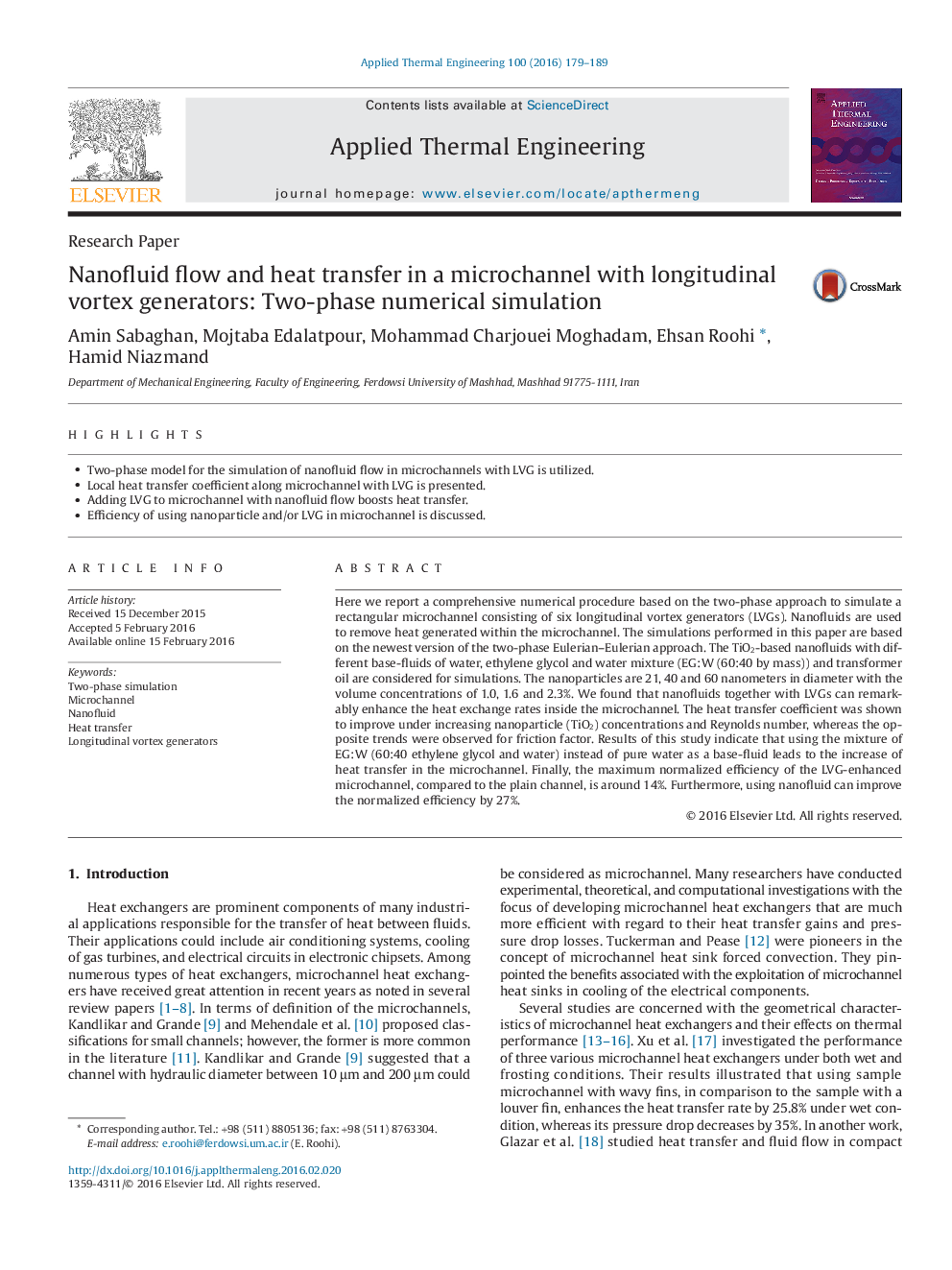| Article ID | Journal | Published Year | Pages | File Type |
|---|---|---|---|---|
| 644858 | Applied Thermal Engineering | 2016 | 11 Pages |
•Two-phase model for the simulation of nanofluid flow in microchannels with LVG is utilized.•Local heat transfer coefficient along microchannel with LVG is presented.•Adding LVG to microchannel with nanofluid flow boosts heat transfer.•Efficiency of using nanoparticle and/or LVG in microchannel is discussed.
Here we report a comprehensive numerical procedure based on the two-phase approach to simulate a rectangular microchannel consisting of six longitudinal vortex generators (LVGs). Nanofluids are used to remove heat generated within the microchannel. The simulations performed in this paper are based on the newest version of the two-phase Eulerian–Eulerian approach. The TiO2-based nanofluids with different base-fluids of water, ethylene glycol and water mixture (EG:W (60:40 by mass)) and transformer oil are considered for simulations. The nanoparticles are 21, 40 and 60 nanometers in diameter with the volume concentrations of 1.0, 1.6 and 2.3%. We found that nanofluids together with LVGs can remarkably enhance the heat exchange rates inside the microchannel. The heat transfer coefficient was shown to improve under increasing nanoparticle (TiO2) concentrations and Reynolds number, whereas the opposite trends were observed for friction factor. Results of this study indicate that using the mixture of EG:W (60:40 ethylene glycol and water) instead of pure water as a base-fluid leads to the increase of heat transfer in the microchannel. Finally, the maximum normalized efficiency of the LVG-enhanced microchannel, compared to the plain channel, is around 14%. Furthermore, using nanofluid can improve the normalized efficiency by 27%.
